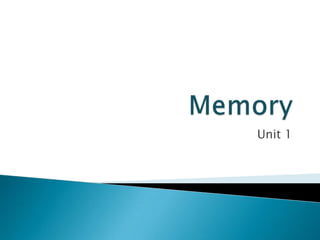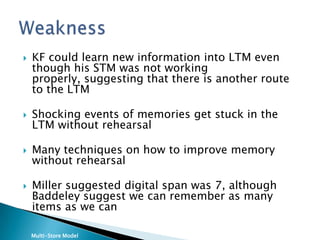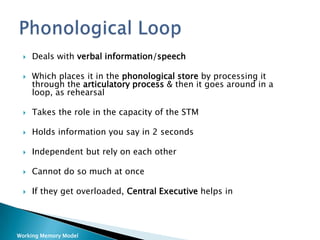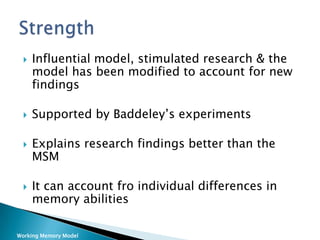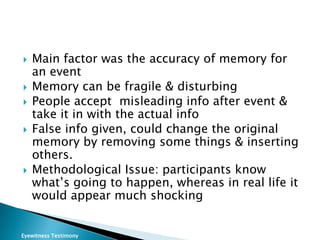1. The multi-store model of memory proposes that memory consists of three main stores: sensory memory, short-term memory, and long-term memory.
2. Sensory memory briefly stores sensory information, short-term memory can hold information for seconds to minutes, and long-term memory stores information indefinitely.
3. The working memory model updated the multi-store model by proposing two slave systems - the phonological loop and visuospatial sketchpad - that actively maintain information in short-term memory under the control of a central executive.
